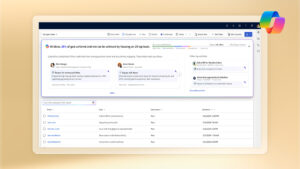
Embrace cloud migration with Microsoft Dynamics 365
In today’s rapidly evolving business environment, organizations must make fast decisions and embrace agile practices to reshape their operations while ensuring stability and continuity. Inflexible, outdated, and disconnected systems often pose risks that hinder their ability to respond promptly, seize new opportunities, and minimize disruption.
In the recent Microsoft Dynamics 365 Future of Enterprise Resource Planning (ERP) Survey, we discovered that 93% of business leaders advocate the benefits of adopting flexible and integrated ERP systems. However, only a mere 39% expressed confidence in their current ERP system’s flexibility and integration capabilities to effectively leverage resources for business model transformation.1 This insight is crucial, particularly for organizations with legacy on-premises solutions that may struggle to meet new business demands.
Businesses relying on on-premises ERP and business management systems face challenges including:
- Slow responsiveness and delayed decision making due to disconnected data and lack of real-time information.
- Greater vulnerability to security threats and challenges in meeting compliance due to a lack of advanced capabilities and resources.
- Difficulty competing with peers that embrace new AI-powered technologies dependent on cloud solutions.
In this blog post, we’ll discuss how the shift to cloud solutions empowers organizations to tackle challenges and thrive in a demanding era. We’ll also explore Microsoft’s Accelerate, Innovate, Move (AIM) program for a smooth cloud transition.

Meet new demands with cloud innovation
The importance of business agility in today’s quickly shifting economy can’t be emphasized enough. With economic volatility and swiftly changing consumer preferences, 77% of business leaders acknowledge that these conditions are the most critical factors driving the need for agile business operations.2 Prioritizing agility enables organizations to respond effectively to evolving market conditions and gain a competitive advantage.
One customer that capitalized on the opportunity to meet new business challenges by moving from on-premises to the cloud was Ullman Dynamics, a world-leading provider of highly sophisticated suspension boat seats that serves organizations in more than 70 countries, including the United States Navy.
Serving customers is Ullman’s highest priority, but as the company grew, outdated technology kept it from meeting customer demands in key markets. With a recent surge in growth, experiencing up to a 50% annual increase, Ullman required warehouse expansion every two years. Concurrently, its products had to evolve to meet customer demands. This escalating scale and complexity strained its legacy business solution.
“Our traditional, on-premises ERP solution wasn’t able to handle the complexities of our modern business. We needed to consolidate our data into a more powerful system that could provide a full overview of our operations.”
Carl Magnus, Chief Executive Officer, Ullman Dynamics
In selecting a new business solution, Ullman had exacting criteria. It sought a solution that could scale and support its expanding global enterprise while also demanding exceptional flexibility.
By implementing cloud-based Microsoft Dynamics 365 Business Central, Ullman has enabled flexibility, efficiency, and access to valuable insights needed to improve quality service to its expanding client base.
“We’re number one in the world everywhere except for the United States. Now that Dynamics 365 Business Central has removed the barriers to growth, we are fully integrated into the US market, and Ullman Dynamics USA is poised for great success.”
Carl Magnus, Chief Executive Officer, Ullman Dynamics
Improve security when moving to the cloud
Another vital benefit that organizations gain by migrating to the cloud is the rapid innovation of security and compliance capabilities. The cloud helps protect business continuity, streamline IT operations, and navigate challenging compliance obligations as businesses grow.
Microsoft invests heavily in security measures and has the resources and expertise to implement and maintain higher levels of security than an individual organization could achieve on-premises. This is particularly important for small to medium-sized businesses, which often lack the resources to keep pace with evolving security threats.
A recent Microsoft study shows that 70% of organizations with under 500 employees are susceptible to human-operated ransomware attacks3, with these attacks becoming more sophisticated and harder to detect. They often target unmanaged devices, which lack proper security controls, and 80 to 90% of successful ransomware compromises originate from such devices.3 This poses a significant security risk for on-premises organizations that lack the advanced security available in the cloud.
Microsoft customers benefit from 135 million managed devices providing security and threat landscape insights and utilize advanced threat detection with 65 trillion signals synthesized daily using AI and data analytics.4 Moving to the cloud enables organizations to rapidly innovate and simplify the implementation of essential security practices, threat detection, and device management, granting them better protection.
While cloud technologies offer enhanced cybersecurity, they also help simplify compliance with regulatory standards, which is equally important. Managing complex certifications independently is challenging, with 65% of firms struggling with General Data Protection Regulation (GDPR) compliance.5 Microsoft assists customers in assessing data protection controls and offers solutions for compliance, including GDPR, California Consumer Privacy Act (CCPA), International Organization for Standardization 27701 (ISO 27701), International Organization for Standardization 27001 (ISO 27001), Health Insurance Portability and Accountability Act (HIPAA), Federal Financial Institutions Examination Council (FFIEC), and more, enabling rapid and scalable compliance.
With Dynamics 365, organizations can confidently improve the security of their business systems when they move to the cloud. With access to advanced technology for scaling and managing security, as well as a network of thousands of specialized security experts, Microsoft provides tools and resources to ensure your migration goes as smoothly as possible.
Unlock AI and productivity with the cloud
One compelling reason for business leaders to transition from on-premises to the cloud is the potential for enhancing daily work and productivity with collaborative applications and AI. With 73% of business leaders emphasizing the importance of productivity improvements and 80% acknowledging the transformative role of AI, the cloud offers the means to establish hybrid work models, harness automation, and leverage artificial intelligence, resulting in a significant boost in overall productivity.6
With the recent introduction of Microsoft Copilot, businesses can use transformative AI technology that offers new ways to enhance workplace efficiency, automate mundane tasks, and unlock creativity. At a time when two in three people say they struggle with having the time and energy to do their job, Copilot helps to free up capacity and enables employees to focus on their most meaningful work.7
While productivity can be enhanced with Copilot and AI, the combination of these tools with other cloud capabilities, such as collaborative applications, transforms the way work is conducted. By seamlessly connecting Microsoft 365 (Microsoft Teams, Outlook, and Excel) with Dynamics 365, businesses can swiftly make strides in improving productivity through cloud adoption. This connection between employees, data, and applications reduces context switching, centralizes workflows, and promotes efficient actions.
According to Harvard Business Review, the cost of switching between applications is just over two seconds, and the average user toggles between different apps nearly 1,200 times per day.8 This translates to spending just under four hours per week reorienting themselves after switching to a new application. Annually, this adds up to five working weeks or 9% of their total work time. The opportunity to connect employees to data and collaborative tools with the cloud will save valuable time and enable organizations to achieve more.
Move to the cloud with AIM
At Microsoft, our mission is to empower organizations to embrace cloud technologies and help enable a smooth transition. To accomplish this goal, we have introduced AIM, which stands for Accelerate, Innovate, Move.
AIM is a comprehensive program designed to provide organizations with a tailored path to confidently migrate critical processes to the cloud. This initiative helps organizations optimize their systems for enhanced business agility, security, and AI technology integration. AIM offers qualified customers access to a dedicated team of migration advisors, expert assessments, investment incentives, valuable tools, and robust migration support.
With AIM, customers gain access to a range of licensing and deployment offers aimed at reducing costs and maximizing their investments. On-premises customers can take advantage of discounted pricing when transitioning to the cloud, allowing them to optimize their investments as their businesses continue to grow.
When moving from on-premises to the cloud, customers can anticipate a positive ROI. Comprehensive studies reveal that over a three-year period, Dynamics 365 ERP solutions demonstrate strong customer ROI:
- Dynamics 365 Business Central with an impressive 172% ROI9
- Dynamics 365 Supply Chain Management yielding a solid 90% ROI10
- Dynamics 365 Finance demonstrating 122% ROI11
With Microsoft Dynamics 365, organizations can confidently embrace cloud migration, equipping themselves with essential capabilities to excel in a rapidly changing economy.
Sources:
- 1,2: Future of ERP: Empowering businesses and people with AI-guided productivity, Microsoft 2023
- 3,4: Microsoft Digital Defense Report 2023 (MDDR) | Microsoft Security Insider, Microsoft 2023
- 5: Managing compliance in the cloud, Microsoft, 2019
- 6,7: Microsoft Work Trend Index Annual Report, May 2023, Microsoft 2023
- 8: How Much Time and Energy Do We Waste Toggling Between Applications? Harvard Business Review, 2022
- 9: Total Economic Impact™ of Business Central, Forrester, 2023
- 10: Total Economic Impact™ of Supply Chain Management, Forrester, 2021
- 11: Total Economic Impact™ of Microsoft Dynamics 365 Finance, Forrester, 2022




